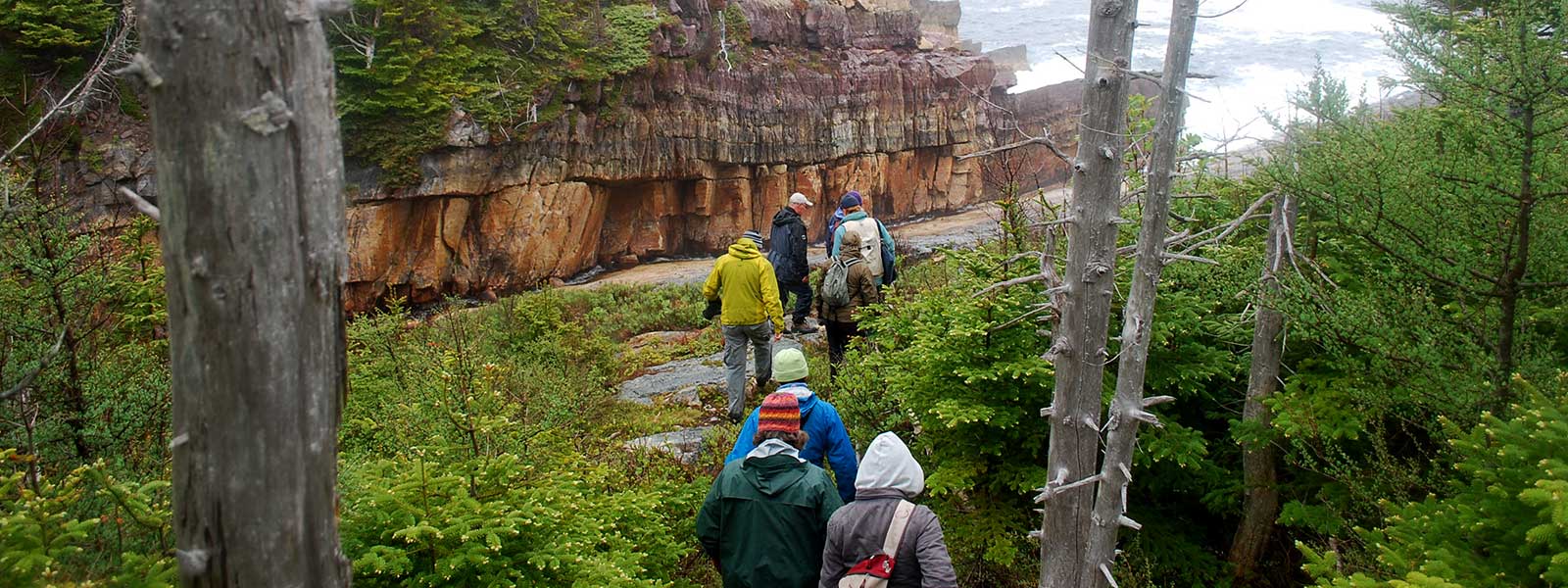The Discovery UNESCO Global Geopark offers a unique opportunity to observe, study, and celebrate one of the most significant transitions in Earth’s history: the Ediacaran Period and its associated rise of animal life. With rocks over half a billion years old, the region is host to some of the most spectacular and exceptionally preserved Ediacaran fossils anywhere in the world. As a site of continuing scientific research, new discoveries are still being made, including the recent find of Haootia
The Bonavista Peninsula is dominated by its striking coastlines. The hiking trails within the Geopark give visitors remarkable vistas of a host of coastal formations, including caves, arches, and sea stacks. Through these stunning landscapes, active geomorphological processes can be viewed at the interface between land and sea. The Geopark also contains a varied history of glaciations. The earliest deposits formed during the last great ice age of the Precambrian, approximately 580 million years ago, while marine terraces and Quaternary deposits are evidence from the Last Glacial Maximum (LGM). Newfoundland Labrador is one of the few places in the world where you can watch icebergs pass by, with the majority being carved off Western Greenland.
From Sir Humphrey Gilbert’s mining of pyrite as if it were gold in the 16th century, through to the stone root cellars used to store food through the fierce winters, to the modern rise in
Discovery Global Geopark invites you to visit, and discover a little more about your geological past.
